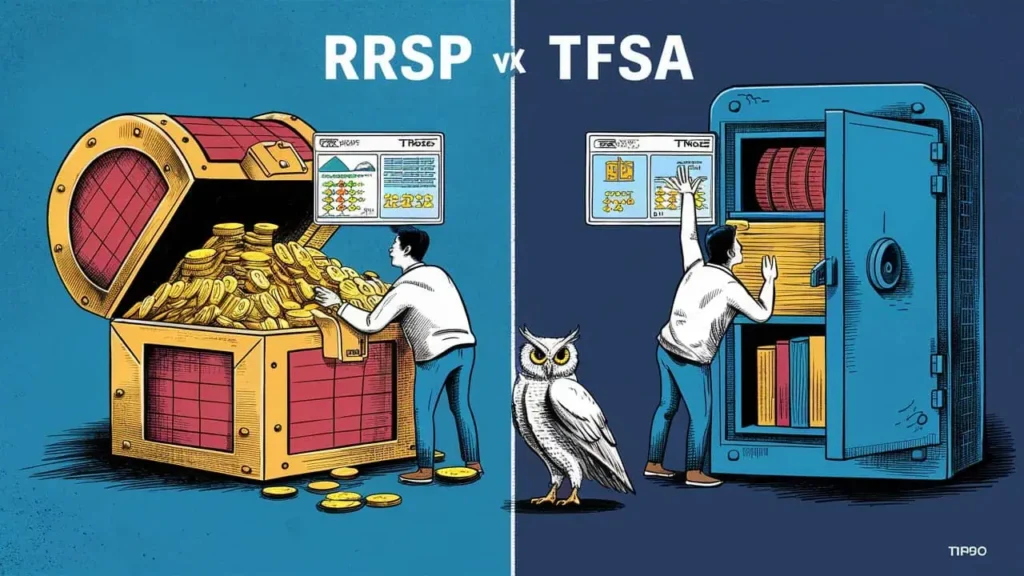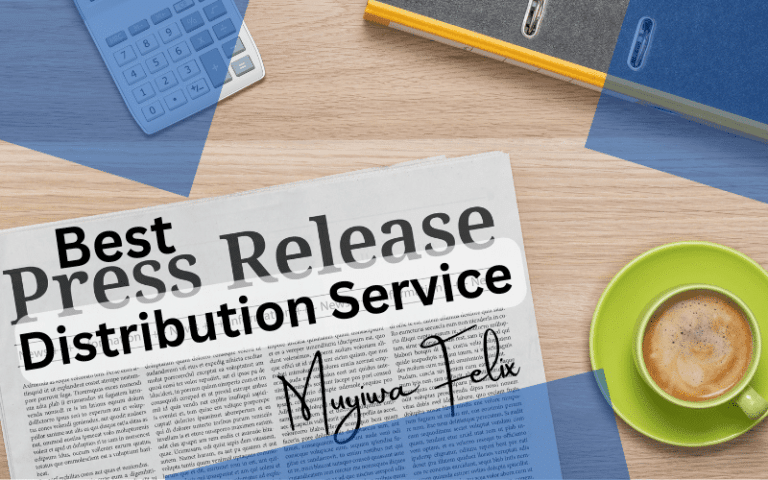RRSP VS TFSA: Which is better and for whom is it better?
Picking the right plan for Canadian retirement savings can seem hard. The big choices are the Registered Retirement Savings Plan (RRSP) and the Tax-Free Savings Account (TFSA). Since 2009, the TFSA has made it possible to grow your savings without paying taxes, fitting well within financial planning Canada frameworks1. RRSPs offer a great perk by making your deposits tax-deductible, helping your budget now1. So, which is better for your retirement plan? The choice depends on your income and retirement goals, with RRSPs often favored by those making over $50,000 for higher deductions and better tax rates when you take money out1.
In your financial planning Canada journey, remember RRSPs let you invest in foreign stocks like those from the U.S., protecting you from certain taxes1. TFSAs are flexible, allowing you to take money out without losing contribution room for later2. If you’re buying your first home or going back to school, RRSPs can help through the Home Buyer’s Plan (HBP) and the Lifelong Learning Plan (LLP), giving penalty-free access to your savings for these purposes2.

Key Takeaways
- TFSA introduced in 2009 for tax-free investment income and withdrawals12.
- RRSP contributions are tax-deductible, offering immediate tax relief and tax-deferred growth until retirement1.
- Understanding your income level is critical to discerning the RRSP benefits and TFSA advantages most relevant to you1.
- Utilizing RRSPs for foreign investments can avert non-resident withholding taxes, enhancing your global portfolio1.
- RRSPs enable strategic financial moves like the HBP and LLP without incurring penalties, fostering your financial freedom2.
Understanding RRSPs and TFSAs in Canadian Financial Planning
Starting your journey toward smart retirement planning? It’s vital to grasp the basics of Registered Retirement Savings Plans (RRSPs) and Tax-Free Savings Accounts (TFSAs). These are key in Canadian financial planning. They offer unique benefits for saving, each with their own tax advantages.
Essential Features of an RRSP
RRSPs help you save for the long run, letting you put away up to $30,780 yearly3. The perk of an RRSP is it lowers your tax now. You don’t pay tax on what you save until you take it out, likely when you’re taxed less in retirement3.
This could mean big tax savings. Plus, if you don’t fill up your RRSP one year, you can make it up later. This flexibility is great for years when you’re tight on cash3.
Primary Benefits of a TFSA
In 2009, Canadians got another cool tool for saving: the TFSA. Unlike RRSPs, money you put in a TFSA isn’t taxed when you take it out, nor are the earnings on it3. This is super handy for unexpected expenses or investment chances that pop up.
And if you withdraw from your TFSA, you get that room back the next year. This means you can refill your account without penalties3.
Tax Implications for Long-Term Savings
Saving for the future means thinking about taxes. RRSPs lower your taxes now and delay tax on earnings. TFSAs don’t tax your earnings or withdrawals at all3. Depending on your financial outlook and retirement plans, picking the right account, or using both, can really shape your future wealth3.
Choosing RRSPs, TFSAs, or both should match your personal finance scene and retirement tax predictions. This choice shapes a secure retirement34.
| Year | TFSA Contribution Limit | Unused Contribution Room |
| 2021 | $6,000 | $0 (Maxed out) |
| 2022 | $6,000 | $500 (Underutilized) |
| 2023 | $6,500 | $6,500 |
The TFSA is a key piece in your money planning. It helps you build wealth tax-free, gives you flexibility, and ensures you can use your savings when needed. Whether it’s for sudden needs, special buys, or saving for retirement, the TFSA is a top choice for Canadians wanting to grow their money wisely and keep it accessible.
Determining the Right Choice for Your Retirement Savings
Choosing between a Registered Retirement Savings Plan (RRSP) and a Tax-Free Savings Account (TFSA) depends on your financial situation and retirement goals. Each option comes with its own benefits, tailored to meet different needs. Knowing what each offers helps you pick the best one for a safe financial future.

Impact of Income and Tax Brackets
If you make more than $50,000 a year, an RRSP could be a smart pick. Putting money into an RRSP lowers your taxable income, giving you tax relief right away. This is especially good if you’ll be in a lower tax bracket when you retire64. The RRSP limit for 2024 is $31,560, a rise from 2023’s $30,780, letting you save more from taxes for the future6.
If you earn less than $50,000 a year, consider a TFSA. While TFSAs don’t cut your taxable income, pulling money out tax-free is a big plus for those in lower tax brackets. This choice makes saving simple and worry-free, with no taxes on the money you take out6.
Assessing Your Current Lifestyle and Future Financial Goals
When planning for retirement, look at how you live and spend now. If you value having access to your savings without penalties, the TFSA stands out. It lets you get to your money anytime, tax-free, perfect for handling life’s surprises4.
However, if you’re focused on saving as much as possible for retirement and you like tax breaks now, go for an RRSP. It’s best if you think your income will drop when you retire. An RRSP’s tax deferral means your investments grow tax-free until you withdraw. Programs like the Home Buyers’ Plan and the Lifelong Learning Plan add even more value to RRSPs6.
Your choice between RRSPs and TFSAs should reflect your income, tax rate, and future plans. Review your finances and talk to a financial advisor. They can help craft a plan that fits your long-term goals.
RRSP VS TFSA: Weighing Your Investment Options
Deciding on your investment strategy is crucial. The key lies in understanding RRSPs and TFSAs. Each offers benefits that cater to different financial goals. This choice can greatly influence your retirement planning.
RRSPs are great if you want to reduce taxable income now, expecting to be in a lower tax bracket upon retirement. Your investments in an RRSP grow tax-deferred. This means more earnings by the time you withdraw4. On the other hand, TFSAs suit those needing easy access to funds without taxes. Such flexibility is ideal for short-term goals or unexpected expenses4.
Choosing between an RRSP and TFSA often depends on your income and future plans. High earners benefit from RRSP’s tax-deferment4. Yet, for accessing funds without financial penalties, the TFSA shines with its tax-free withdrawals4.
Some might opt for both accounts to maximize tax advantages. This depends on your retirement timing and income. Both allow similar investments in mutual funds, bonds, and stocks.
Nerdwallet
| Feature | RRSP | TFSA |
| Tax Implication | Tax-deferred | Tax-free growth |
| Withdrawal | Taxable at withdrawal | Tax-free at any time |
| Contribution Limit (2023) | $30,780 or 18% of income7 | $6,5007 |
| Ideal Usage | Long-term retirement savings | Flexible savings & easy access |
Considering both present and future benefits is vital. RRSPs may offer immediate tax relief. TFSAs offer lasting flexibility and ease. Your choice should be based on a detailed analysis of your financial goals4.
In the debate of RRSP versus TFSA, align your decision with your financial situation and future expectations. Each account has its strengths, tailored to specific financial scenarios and objectives. An informed choice is crucial for maximizing your financial growth and security4.
In-Depth Comparison: Where to Park Your Retirement Funds
It’s key to pick the right place to save for retirement. This choice affects your money well-being and flexibility later on. Whether it’s a Registered Retirement Savings Plan (RRSP) or a Tax-Free Savings Account (TFSA), knowing the differences is key to choosing wisely.
Types of Eligible Investments for RRSPs and TFSAs
RRSPs and TFSAs let you invest in lots of ways. You can choose stocks, bonds, mutual funds, and Guaranteed Investment Certificates (GICs). This means you can plan your investments to fit your risk level and retirement aims.
Understanding Contribution and Deduction Limits
RRSPs and TFSAs have different rules for how much you can put in89. With RRSPs, you can lower your taxable income because you can deduct what you contribute9. TFSAs don’t cut your taxes now, but they let your money grow tax-free. So, you won’t pay taxes when you take money out for retirement9.
The TFSA yearly limit is $7,000, which lets your savings grow without taxes8. RRSPs let you put in more – up to 18% of what you made last year, maxing out at $31,560. This can really help lower your taxes89.
Thinking about limits is key to planning a tax-smart retirement8. For those who don’t always make the same amount, knowing you can use your unused space later is helpful9.
Choosing between these accounts means looking at your money now and guessing your future needs and taxes8. This helps you decide how much to put in each, based on what you think you’ll make in retirement and the taxes then89.
Your choice should match your long-term money goals. Using both accounts well can prepare you better for retirement. By choosing wisely now, you’re setting up a thank-you note to your future self for being smart and prepared.
RRSP Contribution Strategies and Withdrawal Regulations
Getting to know RRSPs means understanding key strategies about contributions and taking money out. These rules are key for using RRSPs to help with your finances. They also match up with plans for retirement and taxes.
Home Buyer’s Plan and Lifelong Learning Plan Exceptions
RRSPs have special rules for taking money out without a penalty, like the Home Buyer’s Plan (HBP) and Lifelong Learning Plan (LLP). With the HBP, you can take out up to $35,000 for a first home. This must be paid back in 15 years6. The LLP lets you withdraw up to $20,000 for school, with a 10-year payback6. These options let you use your RRSP savings without tax for big life steps, as long as you follow the payback rules.
Contribution Age Limits and Tax Implications upon Withdrawal
You can only put money into an RRSP until December 31 of the year you turn 71. After that, you need to switch the savings into something that gives you income, like a RRIF or an annuity. Taking money out of an RRSP counts as income that year. This can really affect your taxes when you’re retired1.
Knowing these rules helps you plan your retirement savings better. By smartly adding to your RRSP and using options like the HBP and LLP, you can lower tax costs and keep your finances flexible.
Thinking about the big picture of taking money out of an RRSP is smart. Even though withdrawals are taxed, using these special exceptions gives you quick financial help. It also lets your RRSP money keep growing.
| Plan | Withdrawal Limit | Repayment Term |
| Home Buyer’s Plan | $35,000 | 15 years |
| Lifelong Learning Plan | $20,000 | 10 years |
Withdrawing from Your TFSA: When and How?
Exploring TFSA withdrawal flexibility is key for Canadian investors. It’s important to know when and how to access your funds. This keeps your financial strategy on track.
Rules Around TFSA Withdrawals and Re-contributions
You can take money out of your TFSA anytime, for any reason, without taxes or penalties. You can also put money back in your TFSA the next year. This rule lets you manage your money better, giving you freedom during tight times. You won’t get taxed for putting money into your TFSA, which helps you plan your finances better10.
Effects of Withdrawals on Contribution Room
It’s essential to understand how taking money out impacts your TFSA contribution room. Your contribution room is based on the yearly limit, unused room, and last year’s withdrawals. If you withdraw, you can add that amount back next year. This makes sure you don’t fall behind in your saving goals10.
The TFSA dollar limit for 2024 is $7,000, adjusted for inflation10. This change helps the TFSA remain useful for saving, fitting economic trends and staying important for Canadians’ finances.
| Year | Contribution Room Available at the Start of the Year | Withdrawals During Year | End of Year Contribution Room |
| 2023 | $6,000 | $2,000 | $4,000 + New Year’s Limit |
| 2024 | $7,000 | $3,000 | $4,000 + New Year’s Limit |
Using your TFSA well means knowing the rules and planning wisely. Think about your long-term and short-term financial needs. This way, you can make the most out of your TFSA’s benefits.
Potential Penalties and Remedial Measures
Going over RRSP and TFSA limits can cost you. For RRSPs, going over by more than $2,000 means a 1% penalty each month1. TFSAs have a 1% monthly penalty for any extra amount3. Yet, pulling out the extra money before year’s end might save you from more fees.
Strategic Planning to Avoid Excess Contributions
To avoid over-contribution, careful monitoring is key. Use the CRA MyAccount for up-to-date info on your allowance and deposits1. Plan your contributions with your yearly income changes in mind
| Account Type | 2023Contribution Limit | Penalty for Excess Contribution | Strategies to Manage Limits |
| RRSP | $30,780 or 18% of income | 1% per month over $2,000 buffer | Monitor via CRA MyAccount, adjust contributions yearly |
| TFSA | $6,000 | 1% per month on excess | Track contributions, withdraw excess promptly |
Learning about RRSP limits and watching your TFSA can help. This makes sure your retirement funds grow right. Regularly check and tweak your investment plans for success.
Aligning Your Investments with Life Stages and Income Growth
As you go through life, your financial needs and goals change. It’s key to match your investment approach with these changes. Doing so makes sure your money grows with you. This helps secure your finances and meets your changing needs.
Adjusting Your Savings Plan According to Life’s Milestones
Major events like starting a job, marrying, or nearing retirement mean it’s time to check and tweak your savings plans. Younger people might do well to put money into RRSPs because they get a tax break, which could lower what they owe in taxes and might even lead to refunds11. On the other hand, those close to retiring may prefer TFSAs for their tax-free growth and withdrawals. This way, they have money available in retirement without losing some to taxes11.
Maximizing Your Investment Growth through Strategic Contributions
Using life milestones to guide your investment can be smart. By saving 10-20% of your income, as experts suggest11, you can strengthen your financial safety net for later life. When you get a raise, you might add more to your TFSA. Or, before moving to a higher tax bracket, adjust your RRSP contributions. Making such changes ahead of time is key to planning for your financial future12.
| Life Stage | RRSP Strategy | TFSA Strategy |
| Early Career | Build retirement savings with tax-deductible contributions | Flexibility for early withdrawals without penalties |
| Mid-life | Maximize contributions to get tax deferment benefits11 | Plan for major expenditures (e.g., child’s education, buying a home) |
| Pre-Retirement | Top up to maximum limits, consider converting to RRIF | Shift focus to maximizing tax-free earnings |
By using a plan that fits your life, your savings strategy can smoothly adjust as things change. This approach to planning makes sure you have a strong and growing financial future. It keeps your retirement hopes alive while caring for current financial needs11.
Unique RRSP Benefits for High-Income Earners and Spousal Contributions
In Canada, if you earn a lot, using Registered Retirement Savings Plans (RRSPs) can really help with retirement savings and tax planning. You can cut down your taxable income by making big contributions to your RRSP. You can put in up to 18% of what you earned last year, up to $30,780 for 2023. Also, if you didn’t use all your limit before, it rolls over7.
Tax Implications for Different Income Brackets
The higher your income, the more you save with RRSPs because of their tax-deferred feature. For those earning more, it means they can reduce their taxable income now. They’ll pay taxes on this later in retirement, likely at a lower rate. RRSPs can be a smart move to delay taxes, especially if you expect to be in a lower tax bracket when you retire14.
Leveraging Spousal RRSPs to Balance Retirement Assets
For couples with different incomes, spousal RRSP contributions are a smart way to even out retirement savings. High earners can deposit into a spousal RRSP. This could lower the total tax the family pays when they retire. It’s a good way to divide assets for retirement fairly. It also lets both partners share in the growth. Taxes on withdrawals are paid by the spouse who earns less. This often means paying less taxes147.
Getting the most out of these strategies can really make a difference in your financial planning, boosting retirement savings for you and your spouse. It’s key to use these options well to save on taxes and build wealth for retirement, keeping your big savings goals in sight.
Conclusion
When it comes to saving for retirement, you have two main options in Canada. Choose between the Registered Retirement Savings Plan (RRSP) and the Tax-Free Savings Account (TFSA). Both can help you reach a bright financial future. Your choice should match your personal situation and the advice we’ve shared on financial planning.
Almost 14.1 million Canadians have a TFSA, and nearly half invest in both plans. This shows many people prefer a mix of both options4. If you make more money, you might lean towards an RRSP. It can offer tax breaks now and let your savings grow tax-free until you withdraw them45.
The details matter a lot when choosing between an RRSP and a TFSA. In 2023, you can put up to $30,780 in an RRSP and up to $6,500 in a TFSA5. You can roll over any unused portion to future years in both plans. This helps plan your savings better5.
Remember, pulling money from your RRSP or TFSA affects your taxes and government benefits differently. RRSP withdrawals are taxed, but TFSA money isn’t5.
Life and earnings change over time. Making smart moves with your retirement savings is crucial. You might like an RRSP for the tax benefits now and the growth over time. Or a TFSA for tax-free earnings and no effect on benefits. Both choices are key in solid financial planning. Use them wisely to meet your financial goals and dream retirement45.

Ogunjobi Oluwamuyiwa Felix preferred to be called Muyiwa Felix, is a personal finance coach and Insurance advisor. He creates content that addresses the core of personal finance in Canada, the United States, and the world at large. Daily, he meets up with clients who are interested in financial risk management, income protection, wealth-building, retirement planning, and tax-efficient investing strategies.






